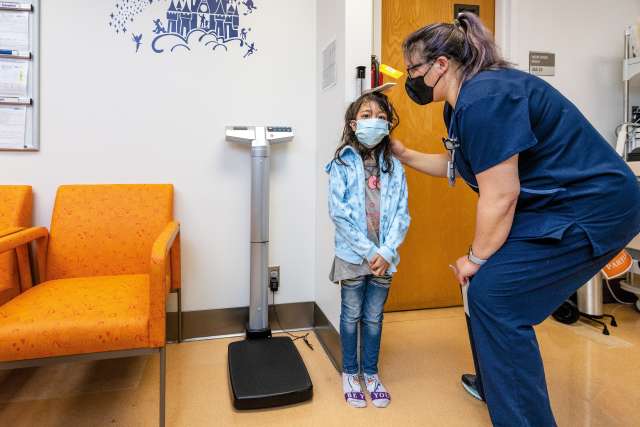It is often said that donating blood saves lives, but have you ever wondered where that pint you’ve just given goes and who it helps? To illustrate the lifesaving power of a blood donation, UCLA Health photographers followed a unit of blood on its journey from a donor into the arm of a 7-year-old girl with severe anemia.
1. Leanna has congenital dyserythropoietic anemia, a rare blood disorder that requires her to receive a unit of type O+ blood every three weeks.

2. The journey of her lifesaving donation begins at the UCLA Blood & Platelet Center, where an O+ donor rests comfortably as a needle is inserted into her arm for the draw, which takes about 10 minutes.
In addition to the pint, a few extra tubes are collected to be sent to a laboratory to be tested for infectious diseases.
A courier later picks up the unit of blood and test tubes, which have been packed in insulated boxes, to deliver to UCLA Health’s component-processing lab at the UCLA Center for Health Sciences.

3. At the lab, the blood is unpacked and refrigerated until a technician begins processing it. The first step is leukoreduction, which removes the white blood cells and decreases the risk of an adverse reaction once the blood is transfused to Leanna.
4. Following leukoreduction, the unit of blood is placed in a centrifuge to separate the red blood cells and plasma. In the meantime, the tubes of additional blood are sent else where to be tested for infectious diseases and to be typed. The processed unit of donated blood will be kept in quarantine until the blood type is confirmed and results of the tests for infectious diseases are received.
Once the unit of blood is typed and determined not be a risk for infectious diseases, it is sent to the blood bank at Ronald Reagan UCLA Medical Center, where it undergoes a second blood-typing test and is further tested to determine its compatibility for Leanna and to ensure it will not cause an immune reaction.
While these final tests are underway, Leanna, who must come to UCLA every three weeks from her home in Lancaster, checks in at the Pediatric Infusion Center. Before she receives her next transfusion, samples of Leanna’s blood are drawn to cross match with the donor’s blood, ensuring, again, it is compatible.

5. The final stop for the donor blood before it is transfused into Leanna’s body is the “issue bench” in the blood bank, where a clinical laboratory scientist reviews the donor’s history and checks if the patient requires special modifications to her blood unit. Before receiving her transfusion, Leanna is given a drug, Desferal, that removes excess iron from her body. Once the donor’s blood is received from the blood bank, it is again checked before the transfusion, which will last four hours.
6. After the transfusion, Leanna is ready to return home. Her spirit and health are a testament to the gracious act of donating blood and how it can save a life.




